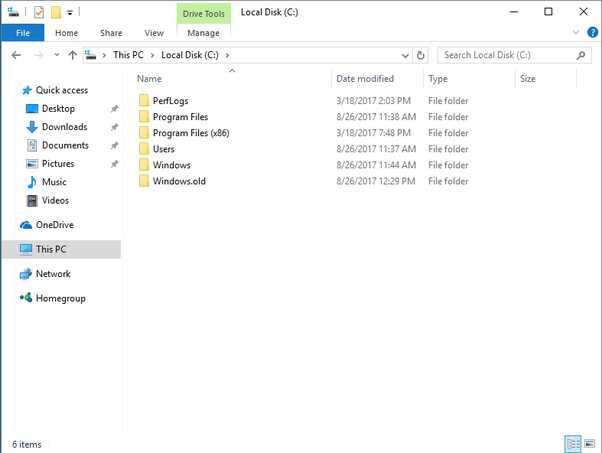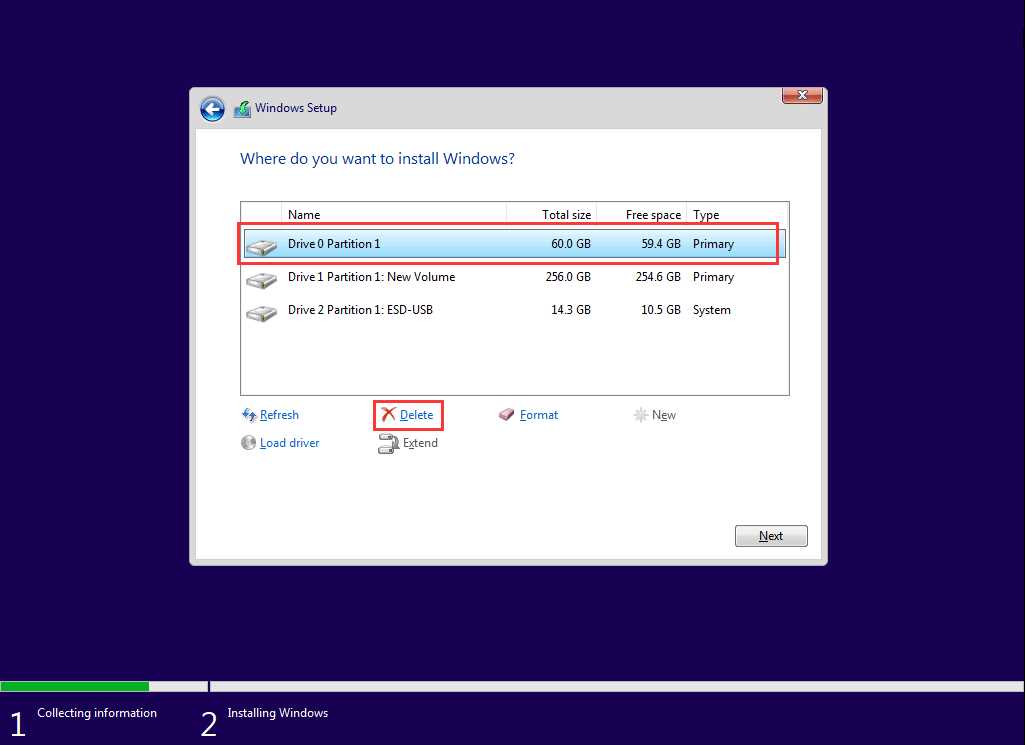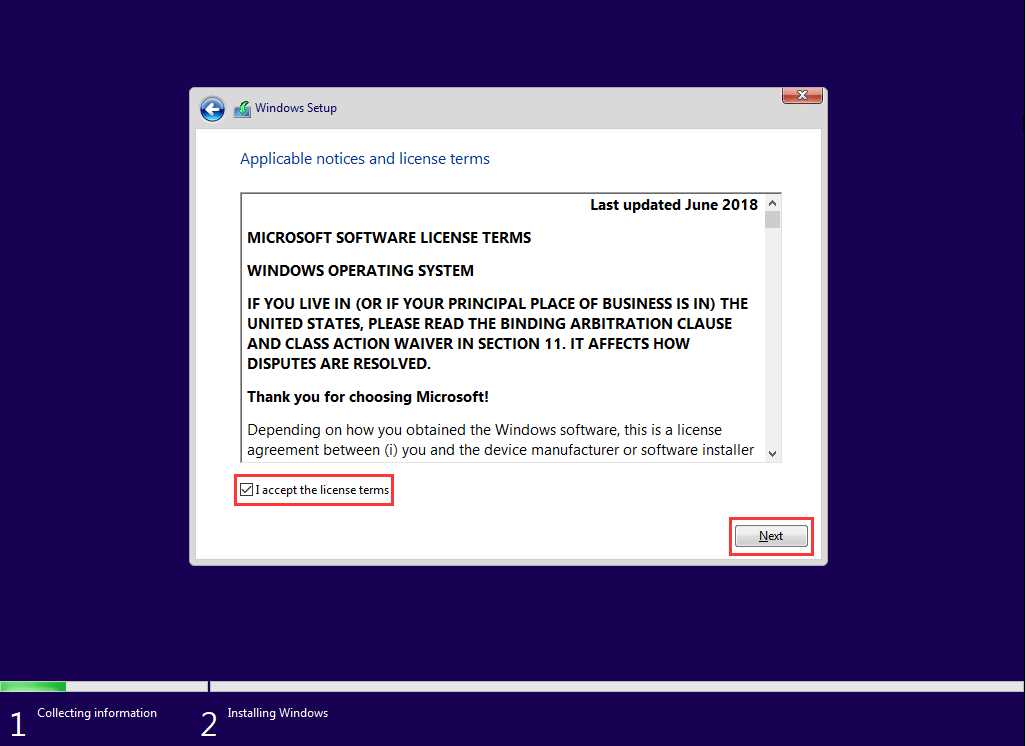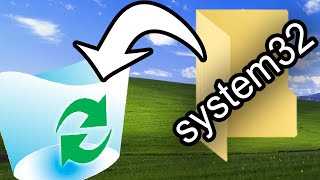
System 32 is a crucial component of the Windows operating system. It contains important files and settings that are necessary for the proper functioning of your computer. However, there may be situations where you need to delete System 32, such as when you want to perform a clean installation of Windows or if you suspect that the files in System 32 are corrupted.
Before proceeding with the deletion of System 32, it is important to understand the potential risks involved. Deleting System 32 can cause your computer to become unstable or even render it inoperable. Therefore, it is crucial to follow the proper steps to ensure that the deletion process is carried out safely and without any adverse effects.
In this step-by-step guide, we will walk you through the process of safely deleting System 32. We will provide detailed instructions and precautions to help you avoid any potential pitfalls. It is important to note that this guide is intended for advanced users who have a good understanding of computer systems and are comfortable making changes to their operating system.
So, if you are ready to learn how to safely delete System 32, let’s dive in and explore the necessary steps to ensure a smooth and successful deletion process.
Section 1: Understanding System 32

System 32 is a vital component of the Windows operating system. It contains essential files and settings that are necessary for the proper functioning of your computer. Deleting System 32 can have severe consequences and should never be done unless you have a specific reason and know what you are doing.
System 32 is located in the C:\Windows\System32 directory and contains files that are crucial for the operating system to run smoothly. These files include DLLs (Dynamic Link Libraries), device drivers, and other system files that are required for various functions, such as networking, hardware communication, and user interface.
Deleting System 32 can lead to system instability, crashes, and loss of important data. It can render your computer inoperable and may require a complete reinstallation of the operating system.
If you are experiencing issues with your computer and believe that deleting System 32 is a solution, it is highly recommended to seek professional help or consult reliable sources for troubleshooting steps. There are alternative methods to resolve problems without resorting to deleting System 32, such as updating drivers, running system diagnostics, or performing a system restore.
Remember: Deleting System 32 is a drastic measure that should only be considered as a last resort and with a thorough understanding of the potential consequences. Proceeding without proper knowledge and expertise can result in irreversible damage to your computer.
What is System 32?

System 32 is a crucial folder in the Windows operating system that contains essential files and data necessary for the proper functioning of the system. It is located in the C:\Windows\System32 directory and is an integral part of the Windows architecture.
The System 32 folder contains various files that are responsible for the operating system’s core functions, including device drivers, dynamic link libraries (DLLs), and executable files. These files are essential for the proper operation of hardware devices, software applications, and system processes.
System 32 plays a vital role in maintaining the stability, security, and performance of the Windows operating system. Deleting or modifying any files within the System 32 folder can lead to severe system issues, including system crashes, software malfunctions, and even data loss.
It is important to note that deleting the System 32 folder is not recommended and should never be done intentionally. Such an action can render the system inoperable and require a complete reinstallation of the operating system.
If you encounter any issues with your system, it is always advisable to seek professional assistance or consult reliable sources for troubleshooting steps rather than attempting to delete or modify the System 32 folder yourself.
Why would you want to delete System 32?

Deleting System 32 is a drastic and potentially dangerous action that should not be taken lightly. The System 32 folder contains essential files and data that are crucial for the proper functioning of your operating system. Removing or deleting these files can result in serious system malfunctions, crashes, and even render your computer completely unusable.
However, there may be rare instances where you might consider deleting System 32. One possible scenario is if your computer has been infected with a persistent and highly destructive virus or malware that has deeply embedded itself within the system files. In such cases, deleting System 32 might be seen as a last resort to completely eradicate the malicious software.
Another reason why someone might want to delete System 32 is if they are attempting to perform a clean installation of their operating system. By deleting System 32, you essentially wipe the slate clean and start fresh with a new installation. However, it’s important to note that there are safer and more effective methods for performing a clean installation without resorting to deleting System 32.
In conclusion, deleting System 32 is a risky and unnecessary action for the average computer user. It should only be considered in extreme cases where all other options have been exhausted, and even then, it’s advisable to seek professional help or guidance to ensure the safety and integrity of your system.
The potential risks of deleting System 32

Deleting the System 32 folder from your computer can have serious consequences and should not be done unless you fully understand the implications. System 32 is a crucial part of the Windows operating system, containing important files and settings that are necessary for the system to function properly.
Here are some potential risks of deleting System 32:
- System instability: Deleting System 32 can cause your computer to become unstable and crash frequently. This is because many essential system files are located in this folder, and removing them can disrupt the normal functioning of your operating system.
- Software malfunction: Deleting System 32 can lead to the malfunctioning of various software programs installed on your computer. This is because these programs often rely on files and libraries located in the System 32 folder to run properly. Removing these files can result in errors and crashes when running these programs.
- Loss of important data: Deleting System 32 can potentially result in the loss of important data stored on your computer. This is because some user data, such as application settings and preferences, may be stored within the System 32 folder. Removing this folder can lead to the permanent loss of this data.
- Inability to boot: Deleting System 32 can render your computer unable to boot up properly. This is because the boot files required for the operating system to start are located in the System 32 folder. Removing these files can prevent your computer from starting up at all.
- Difficulty in system recovery: If you delete System 32 and encounter issues with your computer, it can be challenging to recover your system. Restoring the deleted files or reinstalling the operating system may be required, which can be time-consuming and may result in the loss of other data.
In conclusion, deleting System 32 is a highly risky action that can have severe consequences for your computer’s stability and functionality. It is strongly advised to avoid deleting this system folder unless you are an advanced user with a specific need and a thorough understanding of the potential risks involved.
Section 2: Step-by-Step Guide to Safely Deleting System 32

Step 1: Before proceeding, it is important to understand the consequences of deleting the System 32 folder. Deleting this folder can cause serious damage to your computer and may render it inoperable. It is highly recommended to only attempt this if you are an advanced user and have a thorough understanding of the potential risks involved.
Step 2: Make sure you have a backup of all your important files and data. Deleting the System 32 folder will erase critical system files, which may result in the loss of important information. It is crucial to have a backup to restore your system in case anything goes wrong.
Step 3: Disable any antivirus or security software temporarily. Some antivirus programs may detect the deletion of the System 32 folder as a threat and prevent you from deleting it. It is important to temporarily disable these programs to avoid any interference during the deletion process.
Step 4: Open the File Explorer by pressing the Windows key + E on your keyboard.
Step 5: Navigate to the C:\Windows folder. This is where the System 32 folder is located.
Step 6: Locate the System 32 folder and right-click on it. Select “Delete” from the context menu.
Step 7: A warning message will appear, informing you that deleting the System 32 folder can cause your computer to become unstable or inoperable. Read the warning carefully and click “Yes” to confirm the deletion.
Step 8: The deletion process may take some time, depending on the size of the System 32 folder. Once the deletion is complete, restart your computer to apply the changes.
Step 9: After restarting your computer, check if everything is functioning properly. If you encounter any issues or errors, it is recommended to restore your system from the backup you created earlier.
Note: Deleting the System 32 folder is not recommended unless you have a specific reason and understand the potential risks involved. It is always best to consult with a professional or seek assistance before attempting any major changes to your computer’s system files.
Backing up your important files

Before proceeding with any system changes, it is crucial to back up your important files to ensure their safety. This step is especially important when considering deleting the System32 folder.
Here is a step-by-step guide on how to back up your important files:
- Create a new folder on an external storage device, such as a USB drive or an external hard drive.
- Go to the location where your important files are stored. This can include documents, photos, videos, and any other files you want to safeguard.
- Select the files you want to back up by either individually clicking on them or using the Ctrl or Shift keys to select multiple files.
- Right-click on the selected files and choose the “Copy” option.
- Navigate to the newly created folder on your external storage device.
- Right-click inside the folder and choose the “Paste” option to transfer the files from your computer to the external storage device.
- Wait for the files to finish copying. The time required will depend on the size and number of files being backed up.
- Once the copying process is complete, safely eject the external storage device from your computer.
By following these steps, you can ensure that your important files are safely backed up before making any changes to your system, such as deleting the System32 folder. This precautionary measure will provide you with peace of mind and the ability to restore your files if needed.

